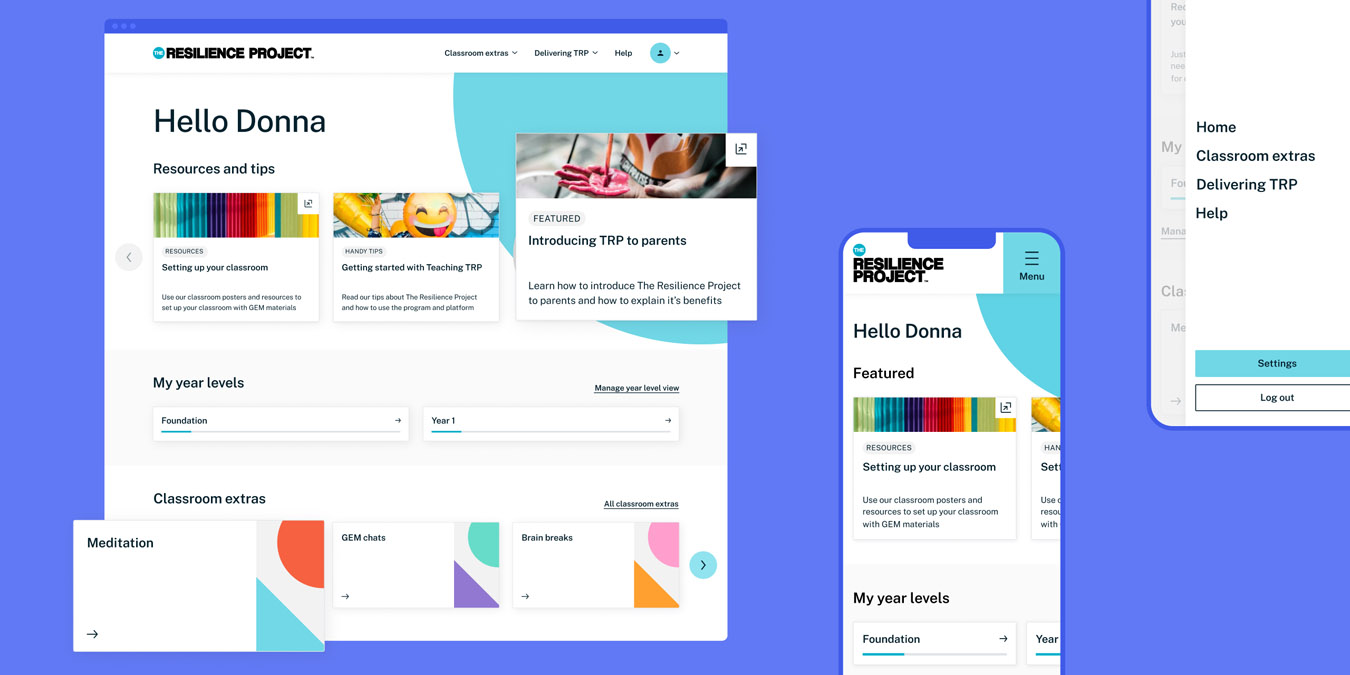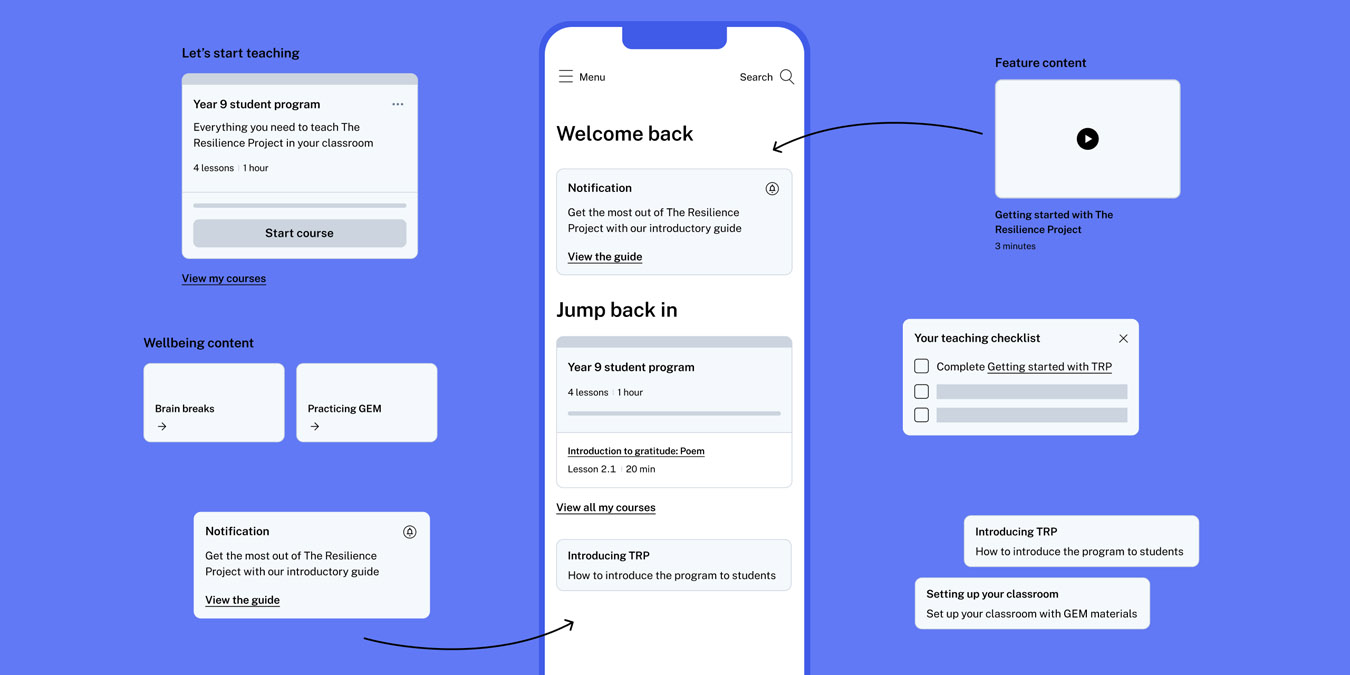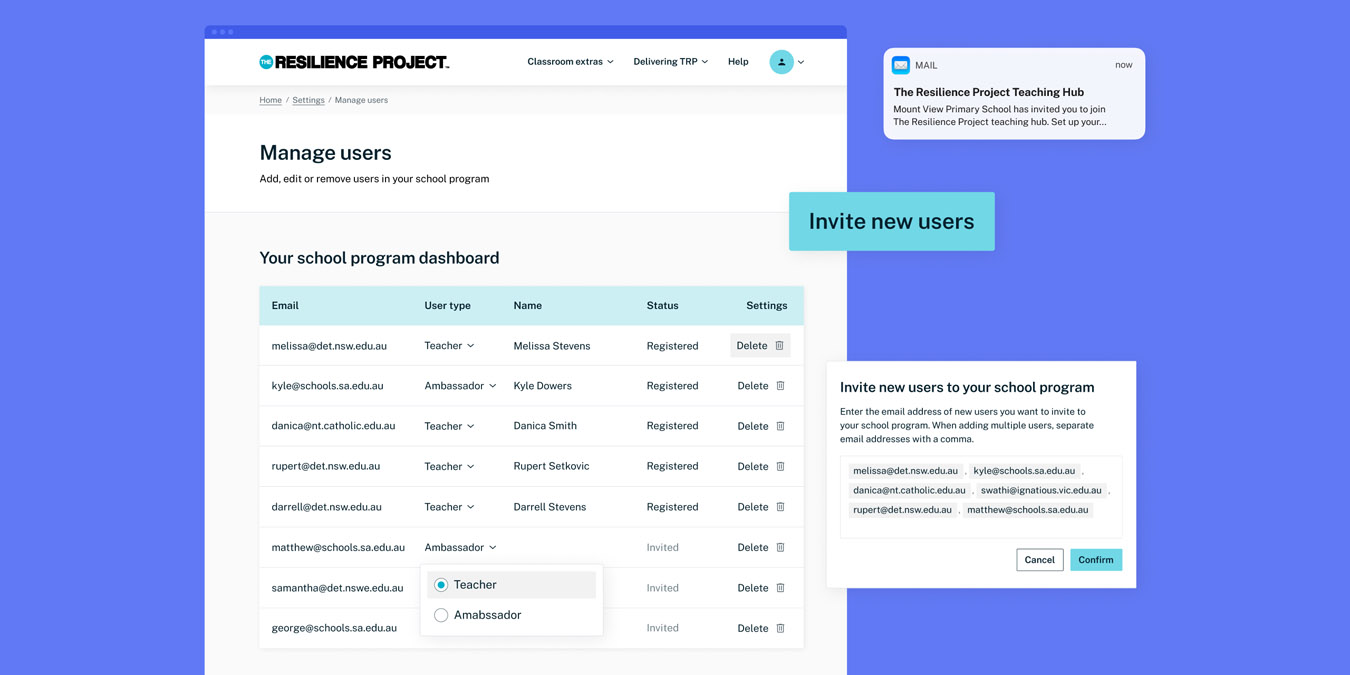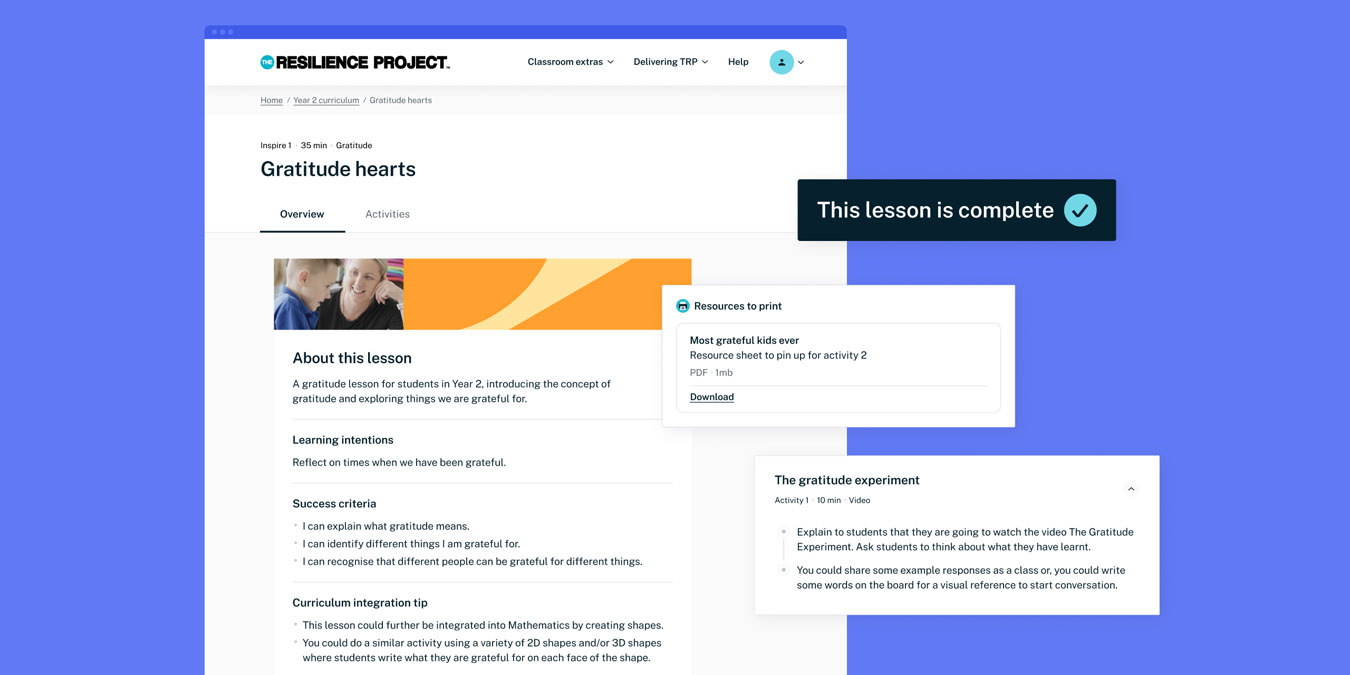We paired a human-centred approach with world-class technical capabilities to build a solution that equips educators to learn, plan, and teach students lifelong resilience skills. Through Discovery and MVP phases, the platform was iteratively developed to shape a fit-for-purpose and scalable solution.
The project had a key focus on the usability needs of teachers. Throughout co-creation and testing, we created a highly usable end product with moments of delight throughout, increasing efficiencies to help teachers be more deeply engaged in content and its delivery in the classroom.
Content strategy was key to the success of this project. Prior to this work, the education content was not designed for digital experiences. The new platform not only transformed the content strategy and digital foundations to champion this content and allow it to really speak for itself, but also allow for future content and digital experiences to be developed.
The platform was designed to tailor learning and support experiences for different users, with their focus areas and outcomes progressively realised year on year. This was achieved through iteratively building out a component library alongside the platform, allowing for multiple user types and personalisation at a user level.
Usability and operational efficiency were key, both for teachers and internal operations. Recognising how busy teachers can be, the digital program experience was shaped to be intuitive, effortless and enjoyable to teach – delivering impact for teachers, students and the whole school community through their experience of the program. It also relieved administrative burden for TRP’s internal team, freeing up team members to focus on more impactful work.







